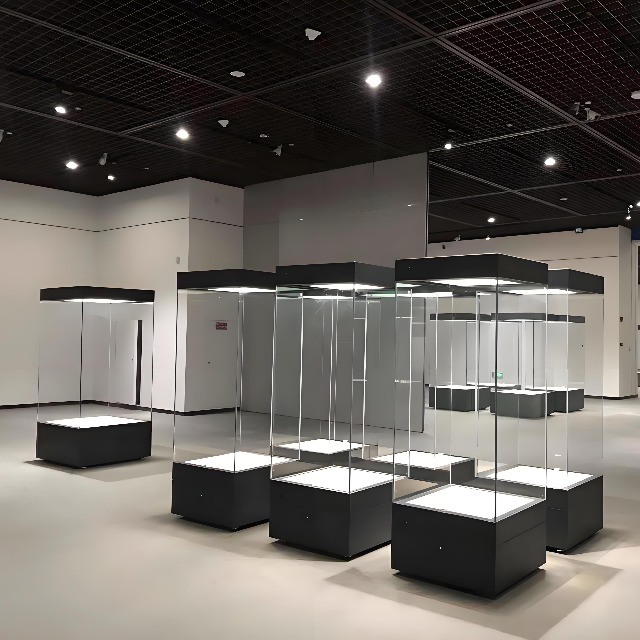& nbsp; As the guardian of cultural heritage, how can museums take into account the protection of cultural relics and audience experience in the new era? The rise of high-end intelligent display cabinets provides an answer to this proposition. Through the integration of Internet of Things, sensors, AI and other cutting-edge technologies, intelligent display cabinets are reshaping the museum's display and protection system, opening a new chapter of in-depth dialogue between cultural relics and audiences.

& nbsp; Intelligent display cabinet: the guardian of cultural relics and the innovator of display. Traditional display cabinet is often limited by environmental fluctuations and human risks, while high-end intelligent display cabinet takes "technology + security" as the core to build multiple protective barriers. The built-in temperature and humidity sensor can control the micro-environment of the display cabinet in real time to ensure that the cultural relics are always in the best state of preservation; the vibration monitoring and alarm system can respond to external shocks in real time. More noteworthy is that the intelligent display cabinet is designed with low reflective glass and shadowless lighting to minimize light damage.
& nbsp; 1. Environmental monitoring and self-adaptive regulation: linked with air conditioning and humidification system, the display cabinet can automatically respond to external climate changes, with humidity fluctuation controlled within ± 5% and temperature accuracy up to 0.5 ℃;
& nbsp; & nbsp; 2. Innovation of interactive experience: With the integration of AR/VR technology, the audience can touch the history behind the cultural relics only by touching the screen-the casting process of bronzes and the details of ancient paintings are vividly restored in the virtual space;
& nbsp; 3. Data operation: The background system records the audience behavior data, providing accurate basis for the museum to optimize the exhibition layout and customize the theme exhibition, and realizing the digital closed-loop of "collection-audience-management".
& nbsp; Application case: Enabling well-known museums to experience the new exhibition experience. The Palace Museum reproduces the picture scroll circulation of "Qianli Jiangshan Tu" through intelligent display cabinets. The audience can switch the mode of "sunlight" and "moonlight" in real time to feel the artistic charm under different light and shadow; The "Intelligent Interactive Cabinet" of Shanghai Museum allows bronze decoration to "jump out" of the exhibition cabinet, and the audience can disassemble the structure of cultural relics and interpret cultural symbols in depth through gesture interaction. These practices not only enhance the attractiveness of the exhibition, but also spread the value of cultural relics in the language of science and technology.
& nbsp; Huabo Art Exhibition has been deeply engaged in the design, customization, production and installation of exhibition cabinets for more than ten years, creating quality with ingenuity and leading the future with innovation. We focus on providing one-stop display cabinet solutions
for museums, art galleries, memorials, art galleries, science and technology museums, history museums, memorials and other cultural institutions.previous:The Role of Museum Display Cases
next:What are the anti-theft system and safety matters of museum display cabinets?